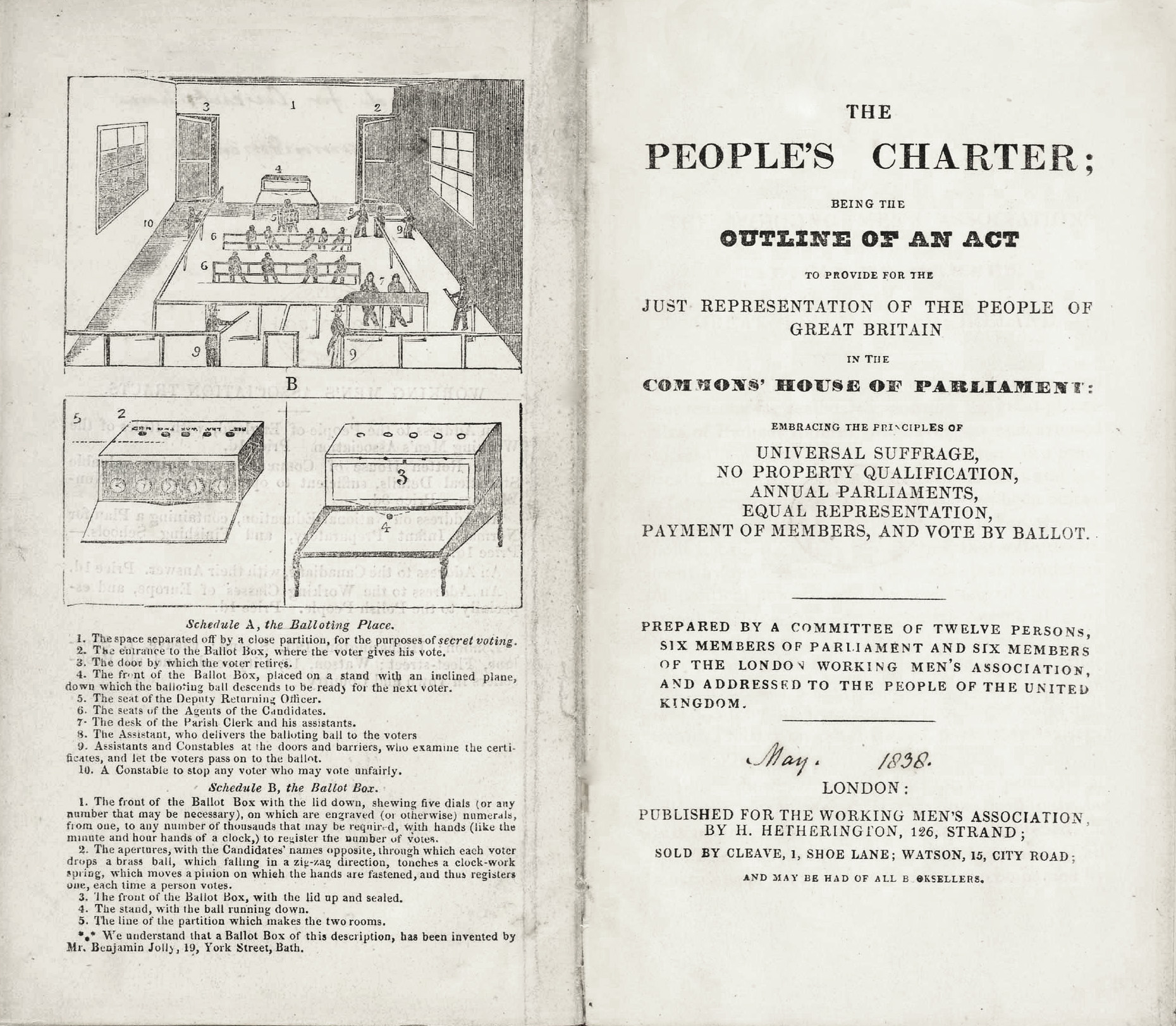THE PEOPLE’S CHARTER. Written by William Lovett on behalf of the London Working Men’s Association and first published in early 1838, the People’s Charter begins by setting out the six demands that would come to define Chartism, including most notably the universal male franchise and the secret ballot. The edition shown here was published at some point in early 1839, before the first Chartist petition was presented to Parliament. Although the Charter would evolve over the next 20 years, the six points – already at the core of radical demands for the previous half century – remained a touchstone of Chartist politics. Public Domain. Source: Kennington chartist project.
Forside 1838 THE PEOPLE’S CHARTER. Written by William Lovett on behalf of the London Working Men’s Association and first published in early 1838, the People’s Charter begins by setting out the six demands that would come to define Chartism, including most notably the universal male franchise and the secret ballot. The edition shown here was published at some point in early 1839, before the first Chartist petition was presented to Parliament. Although the Charter would evolve over the next 20 years, the six points – already at the core of radical demands for the previous half century – remained a touchstone of Chartist politics. Public Domain.
THE PEOPLE’S CHARTER. Written by William Lovett on behalf of the London Working Men’s Association and first published in early 1838, the People’s Charter begins by setting out the six demands that would come to define Chartism, including most notably the universal male franchise and the secret ballot. The edition shown here was published at some point in early 1839, before the first Chartist petition was presented to Parliament. Although the Charter would evolve over the next 20 years, the six points – already at the core of radical demands for the previous half century – remained a touchstone of Chartist politics. Public Domain.


























